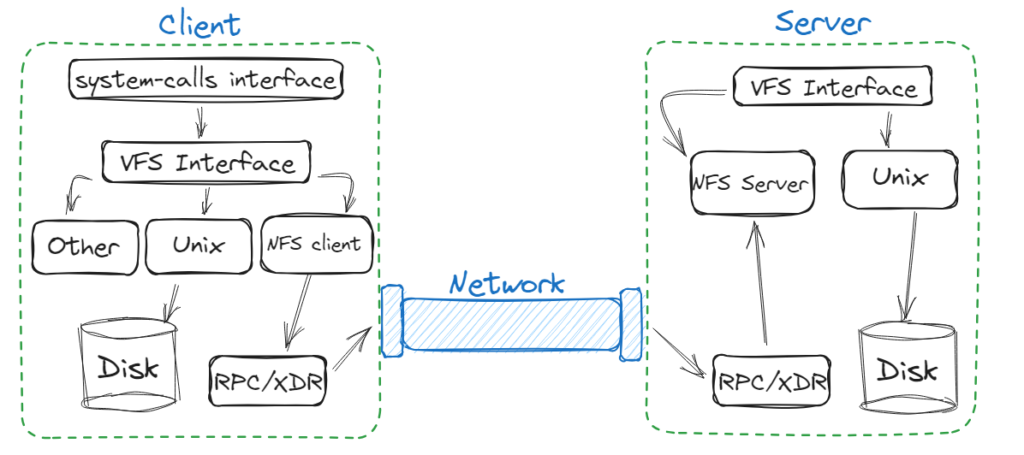
Network File System (NFS) is a distributed file system protocol used by network-based storage systems and servers to share data among network nodes. NFS is an open standard protocol allowing users to access files over a network as though local, increasing scalability and flexibility.
Here are some main points on NFS from a network perspective:
- Architecture: NFS is built on a client-server architecture where the NFS client sends a request for a file to the NFS server, which provides the necessary data. The NFS server manages storage for the clients it serves and exports files and directories to all authenticated clients.
- Networking Protocols: NFS uses different underlying networking protocols, including TCP, UDP, and RDMA (Remote Direct Memory Access). The NFS protocol specification generally runs on top of a Network Transport Layer like TCP/IP or UDP/IP.
- Security: NFS has limited security functionalities, with authentication and authorization management largely delegated to underlying Operating Systems. NFS’s native security mechanisms are not robust, but it does support Kerberos-based authentication. As a result, NFS is often used behind a VPN or with storage locations with strict access control measures to keep traffic and data secure on organizational networks.
- Performance: NFS is optimized for performance, including minimal overhead, low network traffic, and fast client response times. NFSv4 is the latest and most secure version of NFS, which uses in-kernel caching, allowing for better application access to the file-system content and more application scalability.
In summary, NFS is a flexible and scalable protocol used for file sharing over a network. Its network layer architecture, underlying networking protocols, and security considerations must be carefully managed to minimize potential security vulnerabilities and optimize its usage for the requirements of an organizational network.